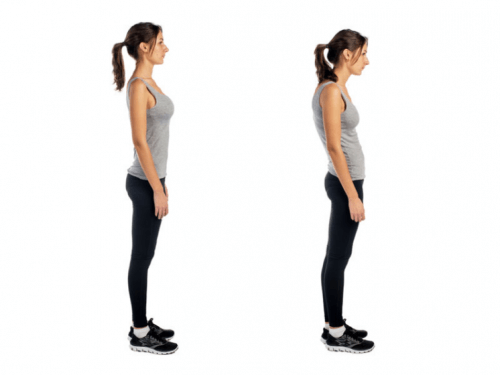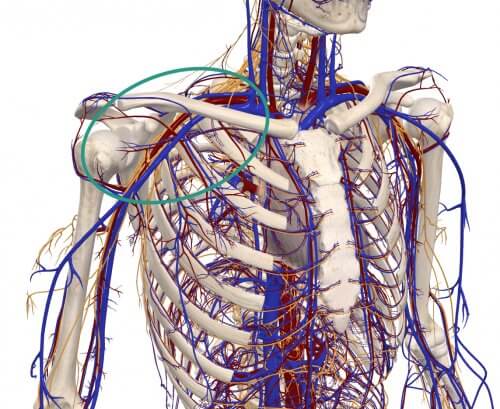lesson content in text
The shoulder girdle, which consists of the shoulder blade, the collar bone and of course the shoulder joint itself, plays a very important role in making the entire upper body function well. But how?
It all comes down to posture.

A lot of people spend most of their day in a hunched position, and as you already know, the body adapts to that.
In a posture like this, the shoulders drop forward, which is an anatomically unstable and tense position for the joint. The muscles and fascia responsible for pulling it back into its normal place ‘deactivate’ and become weak and lengthened, and in time this posture becomes the new default.
This is very important to us because of two things:
Innervation and circulation. We already talked about how the nerves responsible for moving the hands and arms exit the spinal cord at the base of the neck. These nerves make their way to the arms by passing under the collarbone in a pretty narrow space.
And this is true for blood vessels, too.

So what happens when the balance of the shoulder girdle is disturbed, the shoulders drop forward and the whole area tenses up?
The space for nerves and blood vessels becomes even narrower, and they get stuck between bones and muscles. The result is that the quality or quantity of the nutrients and nerve impulses that can get through is decreased. In other words: your dog has chewed on the guitar cable, and now the cable is damaged and making crackling sounds.
Even a tiny change can cause smaller symptoms in the shoulders, wrist or fingers over time. In other words: the cable is okay to use for daily practice but you wouldn’t record your next album with it).
Radiating tension. Fascia is turning the ancient, eastern holistic way of thinking into scientific, anatomical reality. In the body, everything is connected, and now that’s a fact. This is why tension created in the shoulder girdle by poor posture can radiate to the forearm and wrist, where, due to the self-perpetuating process outlined in Module 2, this tension can cause painful symptoms.
This is a classic example of the phenomenon of symptoms not necessarily sharing the same location as their root cause.
